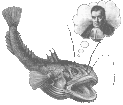UW Aquatic & Fishery Sciences Quantitative Seminar
Tracey Smart
UW School of Aquatic & Fishery Science / Alaska Fisheries Science Center
Alternating environmental states and the early life stages of walleye pollock in the eastern Bering Sea
Abstract
The eastern Bering Sea (EBS) shelf is a highly productive high latitude system that provides critical habitat for walleye pollock spawning aggregations. Oscillating climate states drive shifts in the strength of bottom-up control of ecosystems in this area, affecting phytoplankton productivity, temperatures, wind mixing, and current strengths, all critical components for larval development and dispersal to juvenile nursery habitats. Surveys for the early life history stages of walleye pollock have been conducted opportunistically between 1979 and 2001 and regularly in the spring and summer when walleye pollock larvae are in the plankton from 2002 to the present. Recently, we have chosen to employ generalized additive models and mixed models (GAMs and GAMMs) to analyze the walleye pollock egg and larval abundances in the EBS. These models have proven very useful for identifying local-scale environmental factors that are related to abundance and also flexible enough to deal with problems associated with potential biases in the data (i.e. time of collection, spatial coverage) without limiting the time series to subsets. We also examined the relationships between climate indices and early walleye pollock abundance in the EBS. Eggs and early stage larvae appear to be associated with the environment and climate in very different ways than late stage larvae, with early stages favored under one set of conditions and late stages under another set. The incorporation of these variables may help to strengthen links between larval abundance and recruitment predictions in future modeling efforts.

